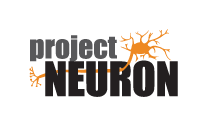Using a computer game to teach scientific argumentation
We will present a case study of how a teacher used a computer game to support students’ construction of scientific arguments and how different levels of scaffolding available through student sheets may impact the quality of students’ arguments.
A Framework for K-12 Science Education and the Next Generation Science Standards emphasize scientific practices as an integral component of science education along with the disciplinary core ideas and crosscutting concepts. As more states adopt the NGSS, teachers will need ways to effectively and creatively incorporate scientific practices into their teaching. Additionally, research has begun to the show the potential of using games to teach and learn. Educational games can situate the learner in contextualized digital environments--an affordance that could be used to motivate and scaffold student participation in science practices.
With the need to teach scientific practices and the affordances of games in mind, we developed a computer game, called “The Golden Hour,” which aims to support the practice of scientific argumentation by engaging students in a medical case study of a patient with a traumatic brain injury. In the game, students play the role of an advanced medical student to 1) assess the patient’s initial condition, 2) diagnose the head injury using a CT scan, and 3) treat the patient by performing neurosurgery. At the end of each of these three stages within the game, students use the information they collected to make an argument that answers the question “What is the best course of action?”
In this presentation, we discuss the case study of a teacher who used this game in the classroom during two years. One research question we aimed to address was “How does a high school science teacher introduce scientific argumentation using a computer game?”. To answer this, we used audio data collected from the classroom to describe the teacher’s instruction across multiple years.
Our second research question was “How might differences in written scaffolds across two years of enactment influence the quality of student arguments?”. We designed students sheets that contained support for constructing arguments to be used in conjunction with the game. During the iterative design process, we increased the level of support within the student sheets between the first and second years of enactment. We examined how this change in scaffolding may have impacted the quality of students’ scientific arguments.
Data presented will include qualitative measures including descriptions of the teacher’s use of the game and students’ arguments as well quantitative analysis of students’ arguments which were scored based on specifically designed rubric.
Barbara Hug,* Chandana Jasti, Rob Wallon, & Hillary Lauren. (2015, November). Research Paper Presentation at the National Association of Biology Teachers (NABT) Professional Development Conference, Providence, RI.
*Conference presenter

